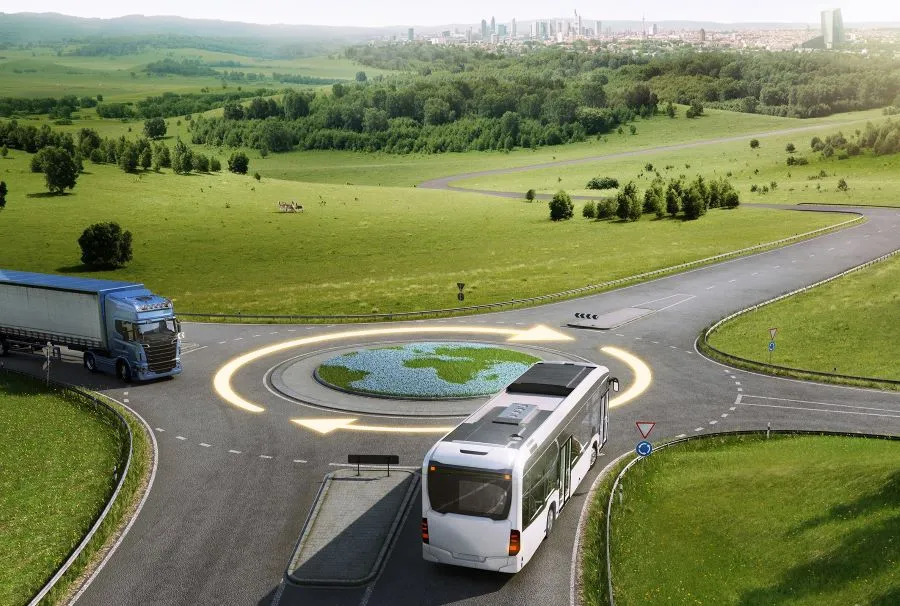Tyres are connecting through AIoT, revolutionising vehicle maintenance and performance in the digital era.
Revolutionizing Vehicle Maintenance: The Rise of Connected Tyres through AIoT
Tyres are connecting. As the world transitions into an era of innovation and digital transformation, the tyre industry is adopting new connected technologies under the umbrella of Artificial Intelligence of Things (AIoT). This combination of artificial intelligence (AI) technologies and the Internet of Things (IoT) infrastructure is transforming vehicle maintenance and performance.
Real-time data processing of actual tyre usage helps OEMs examine and improve existing specifications, allowing them to tailor products to specific customer needs. It also serves as a powerful ally in end-user operations.
Smart Tyre Market to Reach $200 Billion by 2033
According to the latest industry research, the global Smart Tire Market is projected to reach a value of $200 billion by 2033, expanding at a CAGR of 7.8% over the next ten years. The off-highway sector will play a significant role in this growth.
The benefits of connected tyres, such as predictive maintenance, operational efficiency, and long-term cost savings, drive their adoption in various demanding applications. As technology advances, the capabilities and reliability of smart tyres are expected to improve, solidifying their role in the future of off-highway operations.
Andrea Evangelisti on the Evolution of Trelleborg Tires’ Digital Solutions and TPMS Technology
In this context, Andrea Evangelisti, Digital Innovation & Solutions Director at Yokohama TWS, explores the evolution of Trelleborg Tires’ digital solutions in the tyre market. “So far, the scenario has mainly revolved around Tire Pressure Monitoring Systems (TPMS), electronic systems designed to monitor the air pressure inside the pneumatic tires of various vehicles, providing real-time tire-pressure information to the driver or remotely to the fleet manager,” he comments.
These solutions rely on sensors placed inside the tyre to collect data about internal pressure and temperature, transmitting the information to a video terminal on the vehicle or to the cloud for display on a chosen device. “Such solutions usually allow for the creation of reports and the recording of statistics and analytics history,” Evangelisti adds.
For example, Trelleborg Tires’ TPMS system measures pressure and temperature every five seconds, providing instant access to vehicle status and monitoring data through a computer or mobile device. Full connectivity and cloud data transmission enable automated email notifications and personalised vehicle warnings in emergencies.
Advancements in Tyre Technology: From Construction to Agriculture, Enhancing Performance and Efficiency
Evangelisti continues, “These solutions have thrived in construction applications, integrating tyre sensors with a central gateway on the machine and an online platform, offering predictive maintenance capabilities, reducing vehicle downtime, and preventing accidents.”
The potential of gathered data extends to adaptive solutions at the full vehicle scale, such as dynamically adjusting tyre pressure based on load and terrain characteristics or adapting other controls linked to operational parameters.
“In the case of farming equipment,” Evangelisti notes, “tyre sensing with the soil can also be a reliable source for information gathering and automated equipment decision making.”
Adaptive Tyre Management: Revolutionizing Agricultural Efficiency and Performance
The evolution of agricultural tyres with smart technologies focuses on the effects of tyre pressure on tractor performance and soil issues like compaction. Optimal tyre pressure can increase productivity, reduce fuel consumption, improve crop yields, and prevent soil damage.
For this reason, Trelleborg Tires developed an Adaptive Tire Management System (ATMS), allowing tractors to work effectively according to the application. “The great advantages of the ATMS compared to a TPMS are its new functionalities, such as the tyre dynamic load, tractor load distribution, and recommended tyre pressure,” Evangelisti explains. The system informs the farmer on optimising the tractor setup with appropriate tyre inflation pressure and ballasting for optimised traction and flotation on soil and a better setup for road handling at lower rolling resistance.
Evangelisti concludes, “While Tire Pressure Monitoring Systems (TPMS) have significantly enhanced vehicle safety and reliability by ensuring proper tire pressure, Adaptive Tire Management Systems (ATMS) represent a further evolution in the smart tire field, with a comprehensive approach that provides real-time optimisation and predictive maintenance, ultimately offering superior safety, improved fuel efficiency, and extended tire lifespan.” As technology advances, ATMS showcases the future of intelligent tyre management, setting a new standard for vehicle performance, soil performance, and safety.








